Li, Rita Yi Man, Li, Herru Ching Yu; Mak, Cho Kei; Tang, Tang, Beiqi (2016) Sustainable smart home
and home automation: big data analytics approach, International Journal of Smart Home, 10(8),
177-187
Sustainable smart home and home automation:
big data analytics approach
Rita Yi Man Li1; Herru Ching Yu Li2; Cho Kei Mak1; Tony Beiqi Tang1
Sustainable Real Estate Research Center, Hong Kong Shue Yan University
School of Computer Science, University of St Andrews / Sustainable Real Estate
Research Center, Hong Kong Shue Yan University
Abstract
Popularity of information technology not only changes the façade of data management, but
powers smart home and city movement. Despite there are many different types of smart home
technologies, lots of them share similar goal of sustainable development. Heaps of these tools
improve energy generation or save energy and reduce water wastage. Beyond doubt, some of
them achieve the win-win-win co-development in environment, social and economics. In this
paper, we firstly discuss three generations of smart home: (1) Bluetooth and Zigbee enables
smart technologies, (2) smart home with artificial intelligence and (3) smart home robot
which can stroll around home. We then adopt big data analytics method to study the
popularity of smart home and home automation searches in Google from 2004 to 2016.
Finally, we search for the latest smart home technologies that can achieve the goal of
sustainable development. The results show that nations which are keen on smart home and
home automation devices do not only restrict on the richest countries in the World. All the top
three cities with the largest number of Google searches in home automation over the past
decade come from India. They are famous information technology (IT) hubs with many IT
personnel. We speculate that interests in smart home / home automation are correlated with
residents’ computer literacy rather than economic wealthiness. Besides, the research shows
that many of the sustainable home technologies mainly focus on energy saving. Water saving
smart home devices only happen once in a blue moon. That may be reflected in the relative
high costs in using electricity as compared to water in many cities around the World. In short,
the research offers academic, practical and policy contribution.
Keywords: sustainable development, computer aided technologies, facilities, smart homes
1. Introduction
In recent decades, new electrical appliances increase the use of electricity. Electricity grids
expand and more fuels are consumed. At the same time, shrinking water resources Worldwide
and the rising costs of water prompts residential occupants to adopt conservation tactics (1).
Hence, politicians put forward new policies; environmentalists suggest viable solutions and
researchers explore new technologies to reduce the use of water and electricity resources.
1
Electronic copy available at: http://ssrn.com/abstract=2834497 �
Li, Rita Yi Man, Li, Herru Ching Yu; Mak, Cho Kei; Tang, Tang, Beiqi (2016) Sustainable smart home
and home automation: big data analytics approach, International Journal of Smart Home, 10(8),
177-187
Modern residents call for modern residential facilities to enhance social well-being but at the
same time reduce costs. Beyond doubt, smart home apparatus is born at the right time and
place to provide sustainable solutions for home owners.
Smart home is often discussed together with the idea of home automation. It distributes
commands and information via wireless network to electrical appliances, information gadgets
and other internet-based applications via an ubiquitous home network (1). Güneş and Akdaş
(2) concede that home automation systems allow users to control security, lighting, ventilation
and temperature. Balasubramanian and Cellatoglu (3) suggests that home automation saves
electricity and protects occupants from intruders. Reaz (4) finds that a friendly user interface
enhances home automation efficiency. Benmansour, Bouchachia (5) believes that we need to
consider the number and types of occupants in smart home. Collotta and Pau (6) contend that
application of Bluetooth Low to manage energy enhances consumers comfort via peak load
energy demand reduction and allows more appliances to operate at the same time.
2. Three generations of smart home technologies
In recent years, various computational methods have been proposed for the advancement and
development of sophisticated control systems of Smart Home Environment (7). Smart
air-conditioners, security devices, mobile phones and home theatres put theoretical smart
home into practice (8). A myriad of them utilize the technology of artificial intelligence (AI),
multi-agent systems and automation control.
2.1 The first generation of smart home: wireless technology and proxy server home
automation approach
The first generation smart home devices are used to monitor occupants’ activities and operate
electrical devices in a predefined pattern. The Advanced Metering Infra-structure, for
example, sends time-varying electricity price messages to smart meters in residents’ houses.
Smart meters issue instructions to adjust power usage (8). Besides, smart home also provides
support for paralyzed patient (9). To develop and improve home services, researchers shed
light on home automation by introducing Bluetooth home automation system which connect
electrical home devices to one Bluetooth sub-controller. The system lowers the needs of
electrical wires and intrusive electrical installation via wireless technology. Nevertheless,
sharing of one single Bluetooth between large number of devices often lead to an access delay,
ZigBee-based home automation network is therefore introduced. The network requires a local
proxy server to enable communication between electrical appliances and the internet. Another
possible solution to solve the abovementioned problem may involve Internet of Things (IoT)
which gears an all-IP solution based on IPv6 Routing over Low Power and Lossy Network
(RoLL) (10).
2
Electronic copy available at: http://ssrn.com/abstract=2834497 �
Li, Rita Yi Man, Li, Herru Ching Yu; Mak, Cho Kei; Tang, Tang, Beiqi (2016) Sustainable smart home
and home automation: big data analytics approach, International Journal of Smart Home, 10(8),
177-187
Apart from ivory research, the private sector also realizes the potential of smart home and
introduces heaps of relevant new technologies and products. For example, Samsung
introduces a SmartThings hub which can monitor and control electrical devices when users
are away from their place via android and Apple iPhones (11). NuBryte introduces Touchpoint
All-in-One Smart Home Console. It can light switch with Touchpoint. It can control Nybryte
App by using different Android and iPhone. It also has different light modes including
bedtime mode, dimming mode. NuBryte also has wide-angle camera which can let other
mobile phones to receive immediate alert when there are intruders. It can also update weather
information, calendar, events, energy monitoring (12).
Smart devices not only include products which can control other smart products but also send
reminder to users. Quirky Egg Minder Wink App Enabled Smart Egg Tray notifies users
about the number of eggs in fridges and whether the eggs turn bad. The egg tray also has LED
lights to distinguish which eggs are the oldest (13).
2.2 The second generation of smart home: artificial intelligence controls electrical
devices
It has evolved to the notion of Smart Home Environments (SHE). SHE exhibits various forms
of “artificial intelligence” by improving traditional home automation systems with new
“smart functions”. It increases comfortableness, lowers operation costs and enhances security.
A myriads of computational methods are proposed for the design as well as the sophisticated
Control Systems development for SHE with the help from automation, artificial intelligence
(AI) and multi-agent systems (14).
Prior 2015, even though it is widely believed that there is close relationship between smart
home and artificial intelligence, technology as such mainly operates in laboratory rather than
everyday use at home (15). One of the examples is the iSpace in the University of Essex. It is
fitted with intelligent devices to detect and learn from users’ behaviors an provides
suggestions according to users’ needs. These devices can communicate with each other,
coordinate actions and allow remote access via Internet and GSM (16).
In 2014, Amazon Echo was introduced by the internet bookstore giant-Amazon. It is a
sophisticated product unlike other smart home devices only accepts users’ instructions, it can
listen users’ questions and answer them. It reports information about traffic and weather,
provides updates about news, sport scores and users’ schedule. It also controls lights,
thermostats and switches. Moreover, it will become smarter as users interact with it and it
processes the ability to learn (17).
3
�
Li, Rita Yi Man, Li, Herru Ching Yu; Mak, Cho Kei; Tang, Tang, Beiqi (2016) Sustainable smart home
and home automation: big data analytics approach, International Journal of Smart Home, 10(8),
177-187
2.3 Third generation of smart home: robot bubby “who” can interacts with human
beings
Integration of service robots with smart home system is the current trend (18). Affordable
robots are equipped with artificial intelligence and can respond to human’s needs via voice
recognition. For example, Zenbo connects to smart home devices, moves freely and
independently around home, sees things via its camera, makes video calls, recognizes faces,
takes photos and videos. Robots as such not only control smart things but can also be viewed
as a buddy “who” can interact with human (19).
Robot Rovio, a mobile robot equipped with a webcam, a microphone and loudspeakers, is one
of the symbols of the revolution of the integration. The middleware approach that has been
chosen to integrate the Rovio in the smart home is UPnP, which has already been used for this
purpose in other works. Rovio can connect with other UPnP devices such as smart home
systems or other service robots such as Roomba. Integration of Rovio in a UPnP environment
shows how easily service robots can be integrated in smart home and develop new advanced
services that illustrate the benefits of interoperability in the smart home (18).
No matter which generations of smart home, they improve people’s quality of life. In addition,
some experts thought that smart home system could help disabled people to have a better and
convenient life. Costa, Carballa (20) realize that people, especially disabled ones’ lives
become more convenient in presence of home automation.
3. Research method previously used in smart home research
Ethnographic approach, surveys and interviews are adopted in smart home research (21).
Fieldwork study with contextual interviews at interviewees’ homes include role-play,
storytelling and artifact walkthrough activities (22). Other novel research methods for smart
home are recorded in the following Table.
4
�
Li, Rita Yi Man, Li, Herru Ching Yu; Mak, Cho Kei; Tang, Tang, Beiqi (2016) Sustainable smart home and home automation: big data analytics approach, International
Journal of Smart Home, 10(8), 177-187
Research approach
Diary
Provide diaries to participants to record their experiences and
viewpoints when they use the system.
Photographic study
Request the smart home users to take photos of their own home.
Results / merits of this research method
Participants keep records of their interactions with the
system.
It successfully engages participants in the process of
evaluation.
It provides understanding on how Smart home technologies
References
(21)
(21)
(21)
Participants were given mission packs to finish tasks at homes.
are used and identify the roles of technology in people’s
Focus group
everyday lives in the future.
Focus groups allow research participants to discuss their needs and
Data collected in these booklets can provide a wide range of
viewpoints after using smart home system.
variety of information from the households for researchers at
Participant packs are planned and disseminated for the Equipment
each home visit.
Management in home trial.
The booklet records the interactions between researchers and
They used resource packs to keep their diaries of experiences,
participants instantaneously.
records of interaction and photos for the trial.
Participants are given A5 spiral bound record books, Post-it note
pads, emotion stickers and a camera to record their ideas, opinions
and state of mind.
Econometric forecasting approach
5
�
Li, Rita Yi Man, Li, Herru Ching Yu; Mak, Cho Kei; Tang, Tang, Beiqi (2016) Sustainable smart home and home automation: big data analytics approach, International
Journal of Smart Home, 10(8), 177-187
Research approach
Results / merits of this research method
References
It forecasts temperature at home with sensors.
The result shows that over three hours the accuracy is within
(23)
one fifth of a degree Celsius and when over six hours, the
accuracy will be within one half-degree Celsius based on the
one or hours of history.
Two schedule modelling
It studies consumers’ incentives in power consumption
(24)
It analyses the maximum power consumption in smart grid
reduction.
environment based on two scheduling models: online and offline.
It adopts load model with dynamic pricing process
Table 1 Research methods for smart home research
6
�
Li, Rita Yi Man, Li, Herru Ching Yu; Mak, Cho Kei; Tang, Tang, Beiqi (2016) Sustainable smart home
and home automation: big data analytics approach, International Journal of Smart Home, 10(8),
177-187
3.1 Big data analytics
In this research paper, we adopt big data analytics which can act as a proxy for studying the
popularity of smart home and home automation in different parts of the World from 2004 to
2016. In this section, we firstly provide a brief idea on data analytics, followed by big data
analytics.
Data analytics is the use of data collection and analysis to optimize decision making (25). It
reviews large amount of raw and unorganized data to identify patterns which help
organizations or decision makers to have a better understanding of behaviors. It is a useful
tool in gaining meaningful insight on how information, sentiments, as well as opinion are
generated (26). Moreover, analysis identifies and determines prevailing trends and issues in
the market. Organizations nowadays always use data analytics to infer business intelligence
(BI) from social media content for making the decisions and formulate various business
strategies for the decision-makers. Data analytics provides opportunities for business
intelligence creating a platform for the decision-makers to have a better understanding of the
business performance. Business intelligence encompasses the processes and technologies used
to obtain timely and valuable insights into business. However, Data analytics and BI are only
the aid for the people to make decisions, they should process their analysis based on their
analytical thinking skills after getting the results from the data analysis but not to blindly
make their decision according to the results from the data analysis.
Nevertheless, there is challenge for the data analysis. One major challenge is data availability,
including relevance and integrity of data analysis (27). For many managers and organizations,
they may not have the ability to capture data such as computer skills and knowledge, or data
may contain noise and asymmetric information problem exists (28). Even if the data can be
readily provided and the decision-makers are granted full access, they have to consider the
integrity (27), completeness, ambiguity or quality of data.
Big Data Analytics (BDA) applies the idea of data analytics but that aims at handling huge
volumes of data to identify trend, patterns and collect invaluable findings. Big Data Analysis
often links with a mix of Oracle’s Big Data appliance and Cloudera’s Hadoop (29).
4. Research results
Changes in interests of smart home and home automation in google by sheding light on
keyword search from 2004 to 2016 is recorded in the following diagram. It shows that smart
home has gained in interests over time but there is a decreasing interests in home automation.
The largest number of searches country of smart home in Google search engine mainly comes
from Philippines, the US and Germany where the largest number of searches of the cities
7
�
Li, Rita Yi Man, Li, Herru Ching Yu; Mak, Cho Kei; Tang, Tang, Beiqi (2016) Sustainable smart home
and home automation: big data analytics approach, International Journal of Smart Home, 10(8),
177-187
come from Pheonix (the US), Quezon City (Phillipines) and Austin (the US).
With regards to home automation, the largest number of searches countries come from South
Africa, India and United Arab Emirates. Cities with the largets number of keyword search
come from Bengaluru, Hyderabad and Chennai. All these three cities locate in India and are
famous for their information technology development. Bengaluru is known as Indian Silicon
Valley, Chennai emerges as another Indian Silicon Valley (30) and Hyderabad is the home of
Google, Apple, Facebook Microsoft India. The results to certain extend overthrow laymen
viewpoints that home automation and smart home are fancy stuff which are only interested by
rich peoeple and countries only. The results show that there is closer relationship between
computer knowledge and smart home technologies’ interests than economic development.
Figure 1 A comparison between interests in home automation and smart home from 2004 to
2016 in Google (red line indicates home automation wheras blue line represents smart home).
Figure 2 Cities with the largest number of keyword search for smart home in Google (31).
Figure 3 Cities with the largest number of search for smart home in Google (31).
8
�
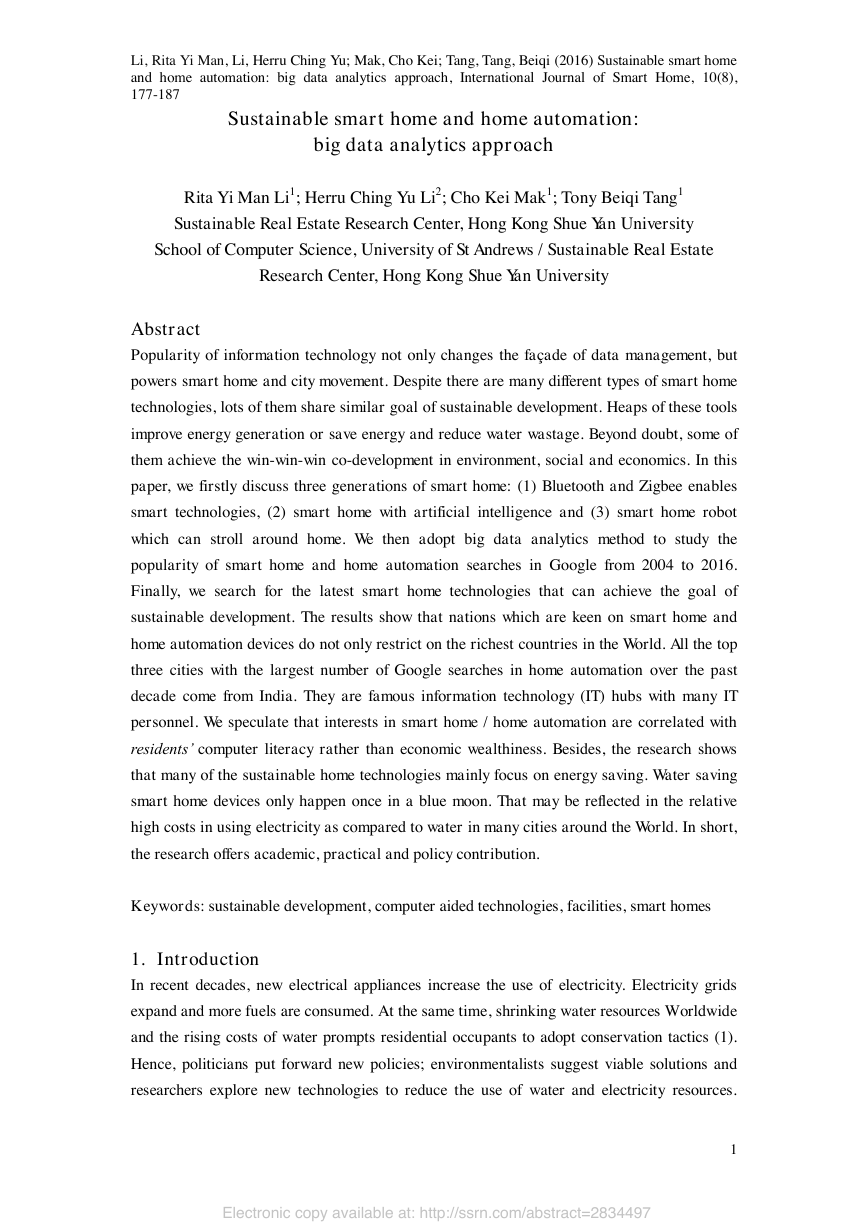
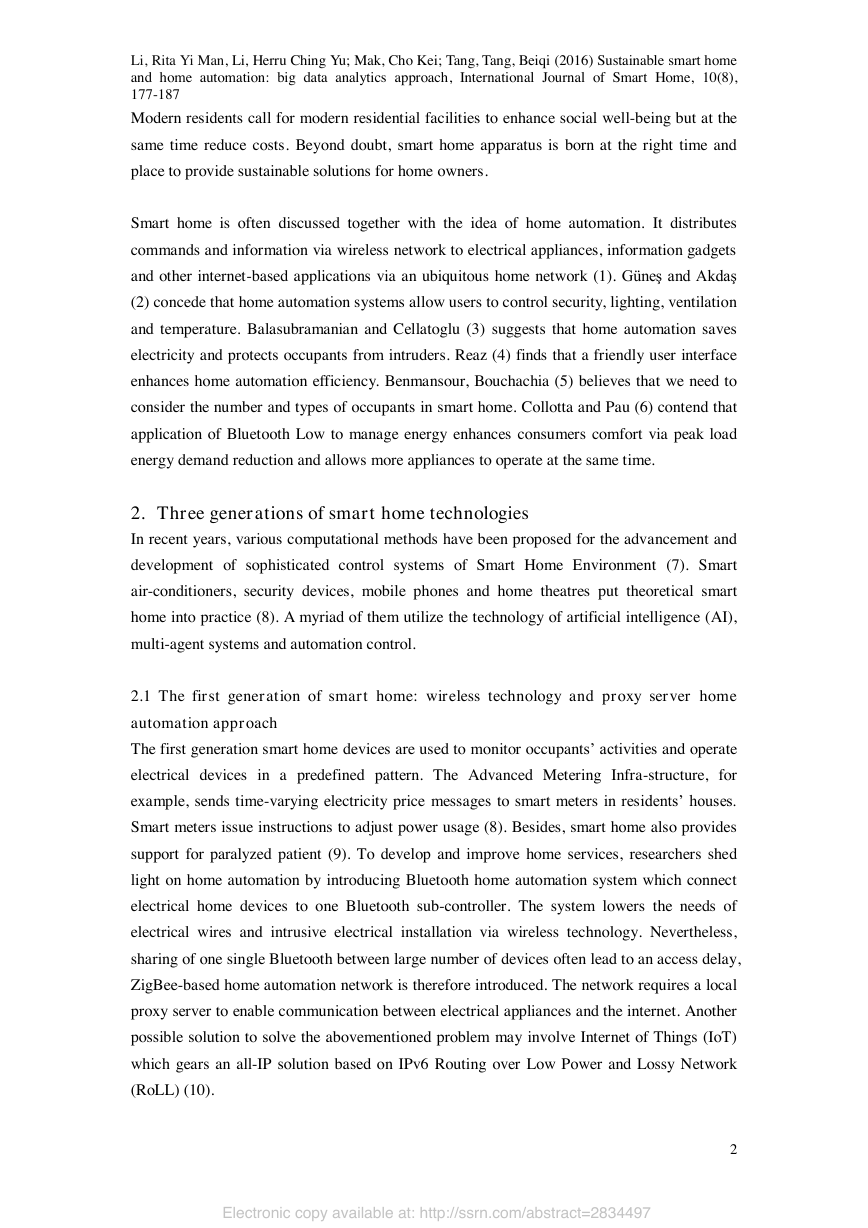

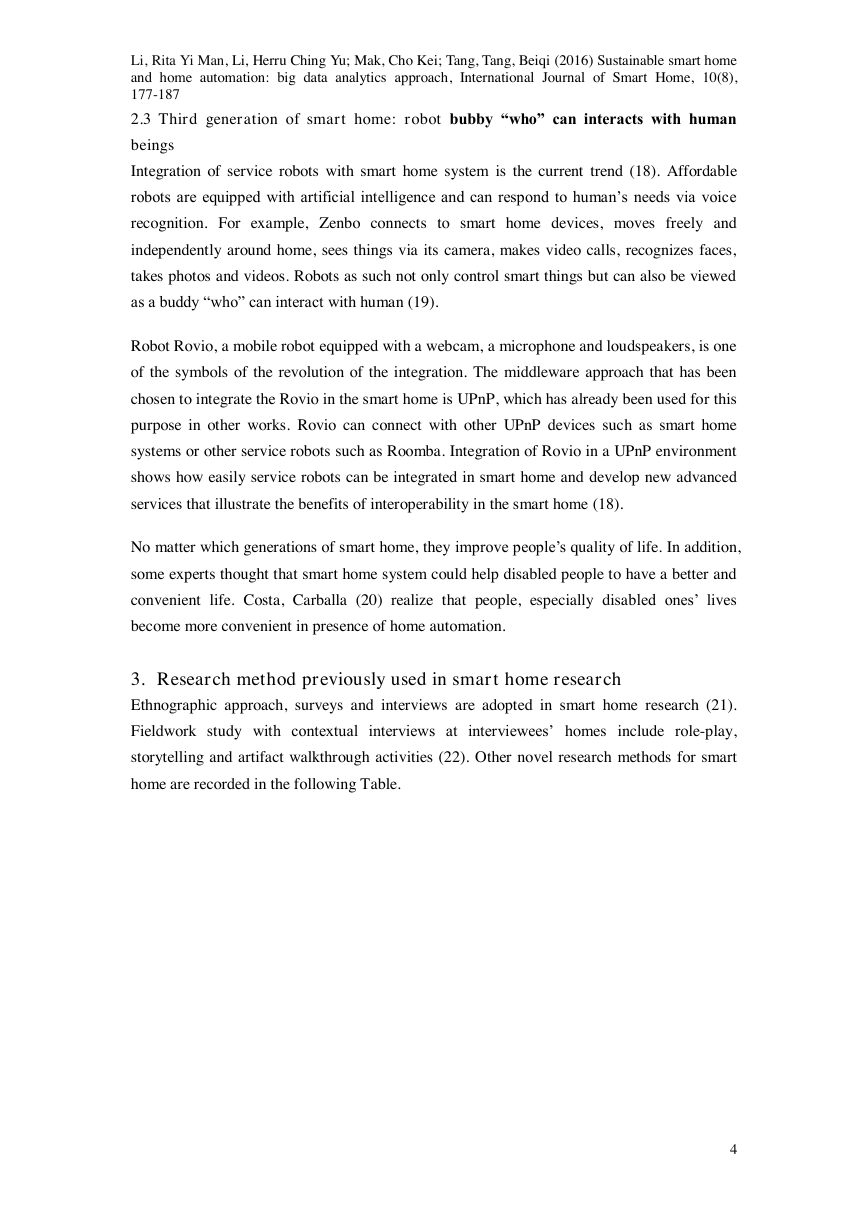
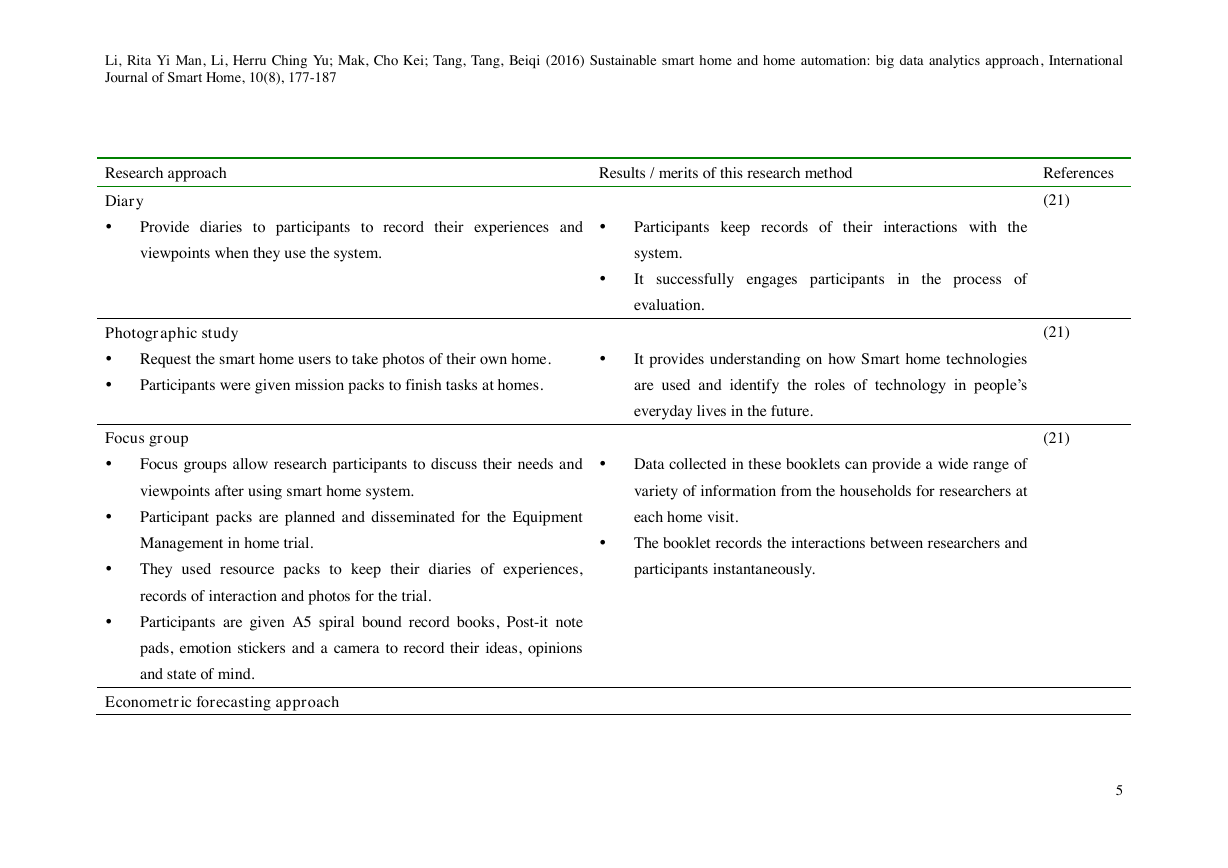
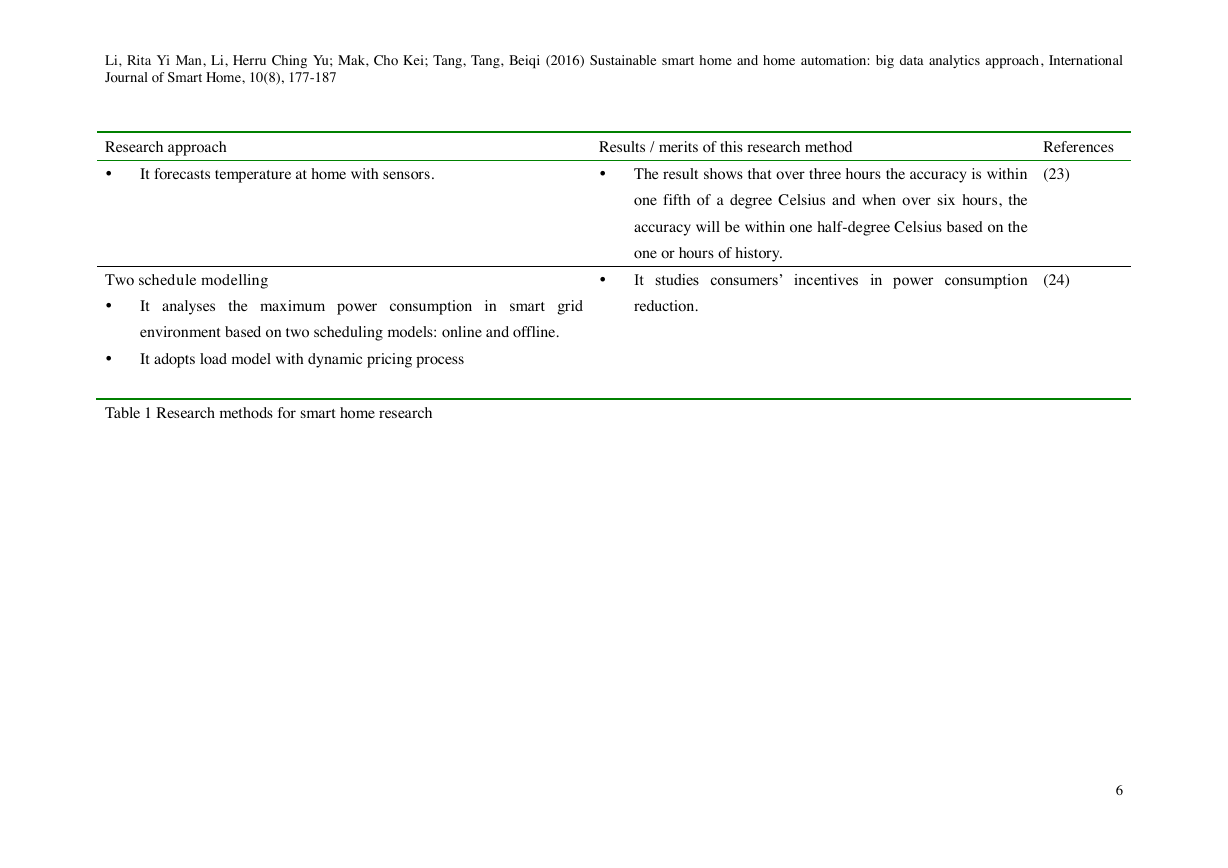
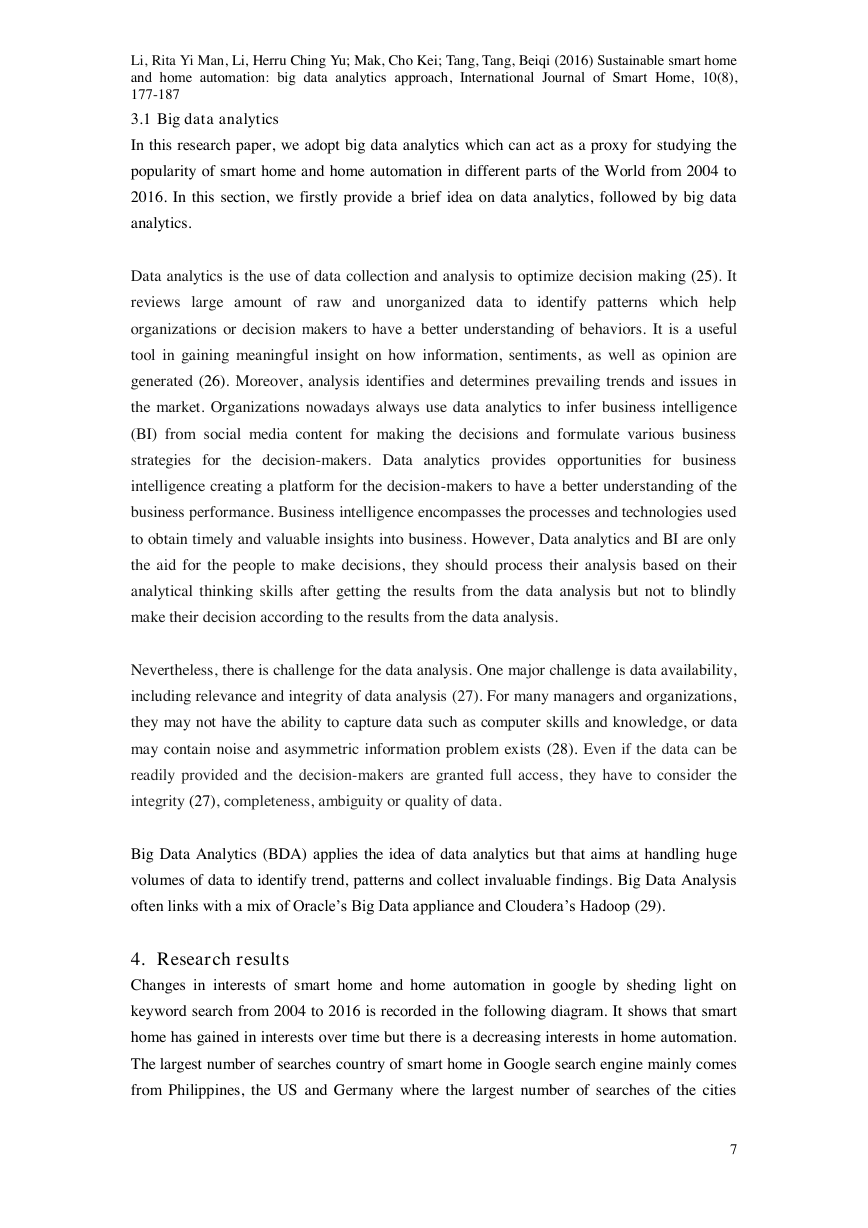
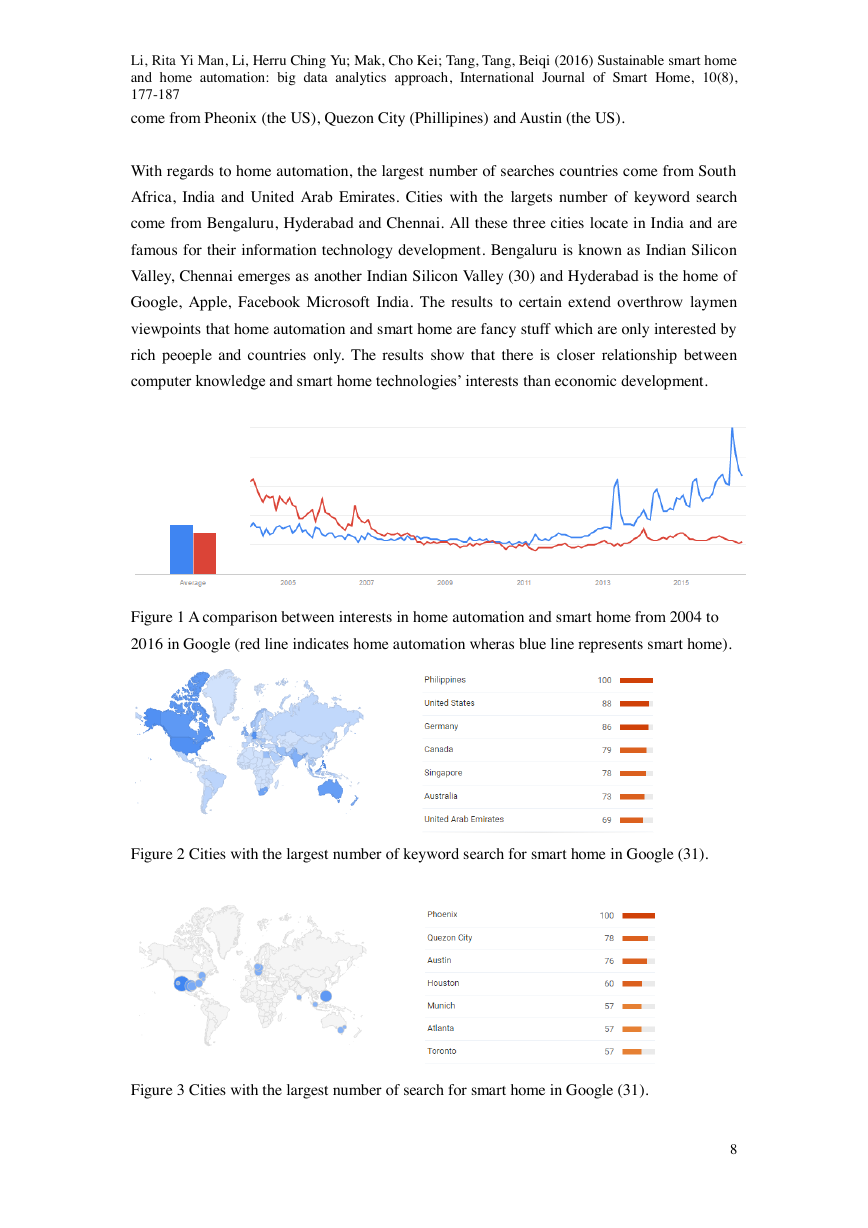








 2023年江西萍乡中考道德与法治真题及答案.doc
2023年江西萍乡中考道德与法治真题及答案.doc 2012年重庆南川中考生物真题及答案.doc
2012年重庆南川中考生物真题及答案.doc 2013年江西师范大学地理学综合及文艺理论基础考研真题.doc
2013年江西师范大学地理学综合及文艺理论基础考研真题.doc 2020年四川甘孜小升初语文真题及答案I卷.doc
2020年四川甘孜小升初语文真题及答案I卷.doc 2020年注册岩土工程师专业基础考试真题及答案.doc
2020年注册岩土工程师专业基础考试真题及答案.doc 2023-2024学年福建省厦门市九年级上学期数学月考试题及答案.doc
2023-2024学年福建省厦门市九年级上学期数学月考试题及答案.doc 2021-2022学年辽宁省沈阳市大东区九年级上学期语文期末试题及答案.doc
2021-2022学年辽宁省沈阳市大东区九年级上学期语文期末试题及答案.doc 2022-2023学年北京东城区初三第一学期物理期末试卷及答案.doc
2022-2023学年北京东城区初三第一学期物理期末试卷及答案.doc 2018上半年江西教师资格初中地理学科知识与教学能力真题及答案.doc
2018上半年江西教师资格初中地理学科知识与教学能力真题及答案.doc 2012年河北国家公务员申论考试真题及答案-省级.doc
2012年河北国家公务员申论考试真题及答案-省级.doc 2020-2021学年江苏省扬州市江都区邵樊片九年级上学期数学第一次质量检测试题及答案.doc
2020-2021学年江苏省扬州市江都区邵樊片九年级上学期数学第一次质量检测试题及答案.doc 2022下半年黑龙江教师资格证中学综合素质真题及答案.doc
2022下半年黑龙江教师资格证中学综合素质真题及答案.doc